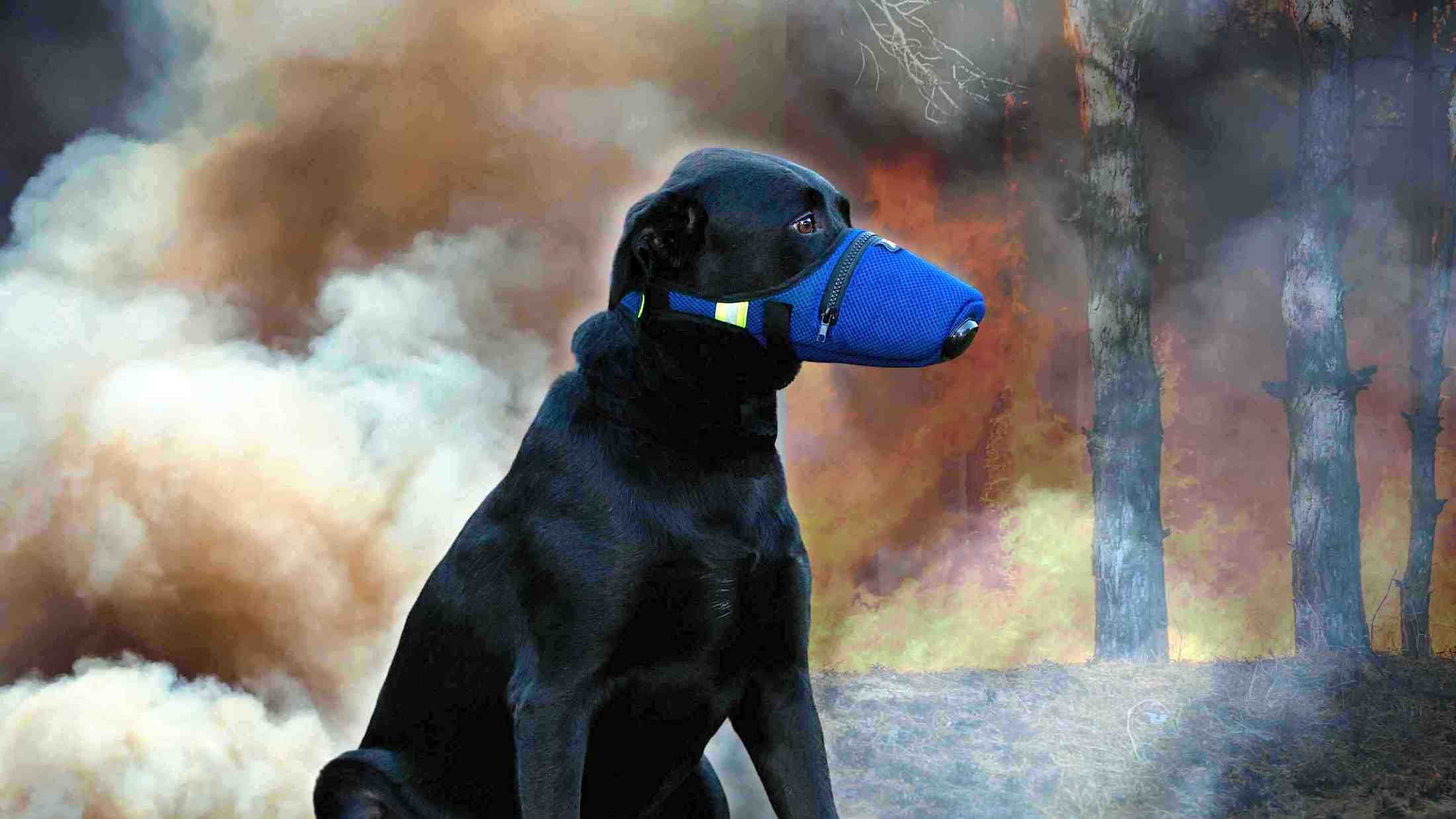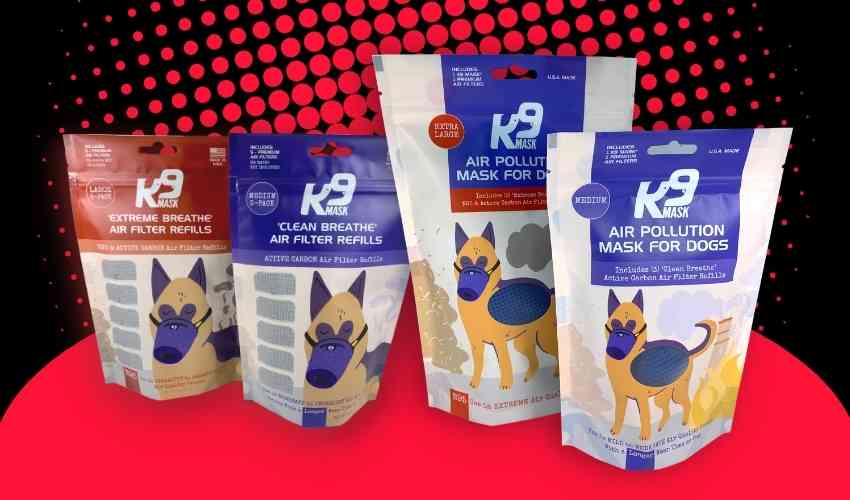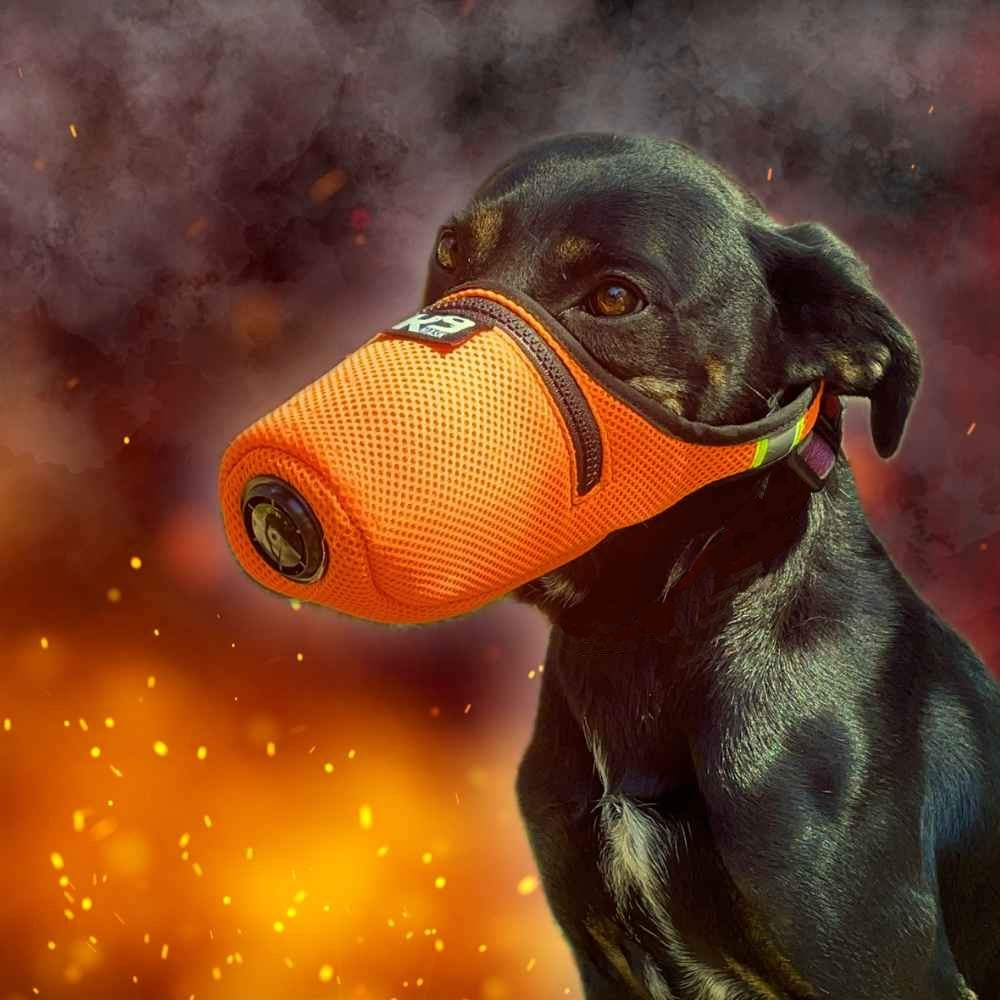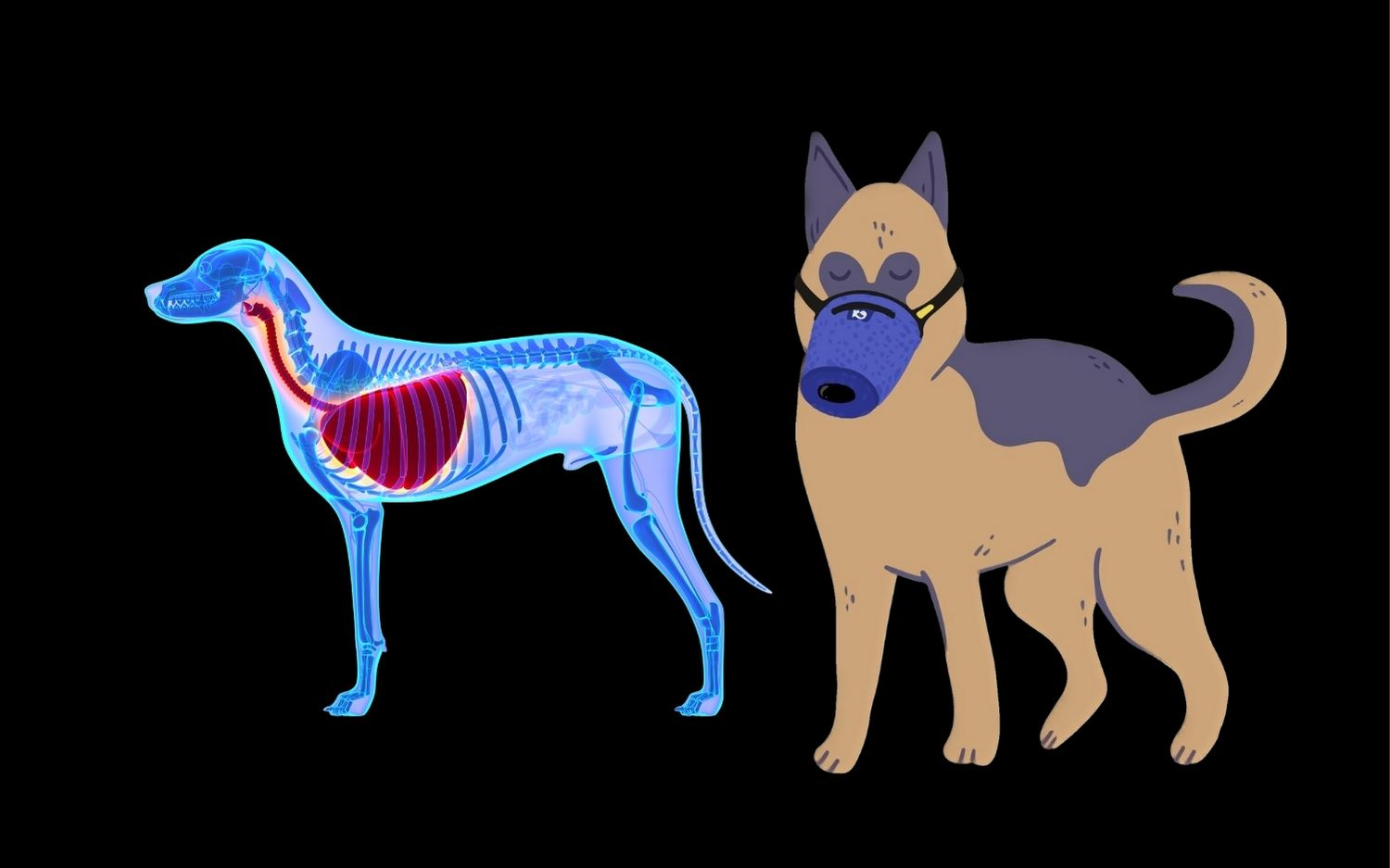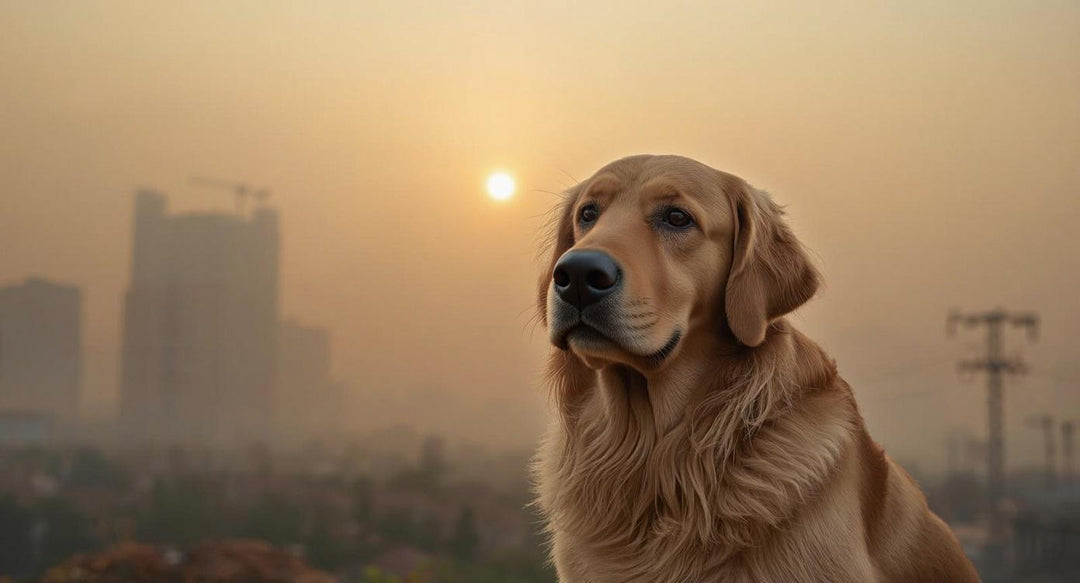At the Good Air Team, we believe that protecting your dog’s health starts with understanding how their body responds to environmental threats. Among the most vulnerable and vital systems in a dog’s body is its respiratory system — uniquely adapted for high efficiency, but also highly susceptible to airborne hazards. Let’s take a deeper look at the science behind a dog’s breathing system, and why using a purpose-designed air filtration mask like the K9 Mask® is essential when facing toxic air quality environments.

The Unique Anatomy of a Dog’s Respiratory System
Dogs have a remarkably efficient respiratory system, built for endurance and acute scent detection. Here are some key characteristics:
Higher Breathing Rate:
At rest, a healthy adult dog breathes about 15–30 times per minute, compared to 12–20 breaths per minute in humans. When exercising, a dog’s breathing rate can increase dramatically, pulling in a large volume of air — and any pollutants it carries.
Olfactory Specialization:
Dogs possess up to 300 million olfactory receptors in their noses (compared to about 6 million in humans), and a specialized olfactory epithelium that is highly vascularized. This system separates breathing and smelling pathways, allowing them to "analyze" air while inhaling. However, it also increases the surface area exposed to airborne toxins.
Panting Mechanism:
Dogs regulate their body temperature through panting, moving large amounts of air quickly across moist surfaces in the mouth, tongue, and upper respiratory tract. Panting exposes dogs to even more airborne particles and pollutants when environmental air quality is poor.
Deep Lung Structure:
Dogs have relatively larger alveolar surface areas proportional to their body size than humans, optimizing oxygen exchange. While this supports athletic activity, it also means that fine particulate matter (PM2.5 and smaller) can more easily penetrate deeply into their lungs and bloodstream.

Why Dogs Are Especially Vulnerable to Poor Air Quality
Because of these respiratory features, dogs are at greater risk from:
- Wildfire Smoke: Contains fine particles, carbon monoxide, volatile organic compounds (VOCs), and toxic gases.
- Urban Pollution: Includes nitrogen dioxide (NO₂), sulfur dioxide (SO₂), ozone (O₃), and particulates from vehicle exhaust.
- Dust Storms and Industrial Accidents: Release silica, heavy metals, and chemical toxins into the air.
- Volcanic Eruption: Volcanic ash, composed of fine particles of rock and glass, poses significant respiratory risks to pets.
Health risks for dogs exposed to these environments include:
- Respiratory inflammation (bronchitis, pneumonitis)
- Asthma-like symptoms
- Eye and nasal irritation
- Decreased oxygenation
- Long-term risks of chronic lung disease and cancer
Since dogs are often more active outdoors and breathe closer to the ground — where heavier particulates tend to concentrate — their cumulative exposure can be significant.

How an Effective Air Filter Mask Protects Your Dog
The K9 Mask® is specifically engineered to address the unique respiratory needs of dogs under toxic air quality conditions.
Here’s how:
High-Efficiency Particulate Air Filtration: K9 Masks use filters capable of trapping PM2.5 particles (particles 2.5 microns and smaller) with over 95% efficiency — critical for preventing deep lung penetration.
Activated Carbon Layer: Carbon filtration absorbs harmful gases like VOCs, ozone, and chemical fumes, which are otherwise not caught by mechanical filters.
Optimized Airflow Design: The mask balances filtration efficiency with breathability, ensuring your dog can pant without excessive resistance — vital for cooling and stress reduction.
Secure, Adjustable Fit: K9 Masks are tailored to the canine facial anatomy with adjustable straps to create a comfortable seal without hindering natural movements, even during activity.
Washable and Replaceable Filters: Reusability and replaceable components ensure ongoing protection without loss of effectiveness.
Scientific Support for Protective Air Masks
Studies on animal exposure to wildfire smoke and air pollution highlight increased rates of respiratory distress, cardiovascular strain, and systemic inflammation. Controlled use of particulate filtration devices has been shown to reduce inflammatory biomarkers and improve blood oxygenation — outcomes we aim to deliver for dogs with the K9 Mask®.
While most protective equipment has historically been designed for humans, the same principles apply to canine respiratory protection: filter particulates, neutralize gases, and maintain natural respiratory mechanics.

Protect Your Dog’s Breath, Protect Their Life
Your dog depends on you for protection, especially when the air around them turns hazardous. Investing in a K9 Mask® is an investment in their long-term health, comfort, and quality of life. Whether facing wildfire smoke, urban pollution, volcanic ash, or environmental disasters, be prepared — and breathe easy knowing your dog is safeguarded.
Explore K9 Mask® models today and find the right size and filtration options for your canine companion.


